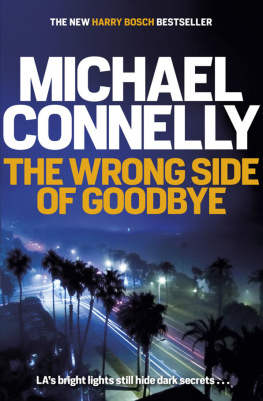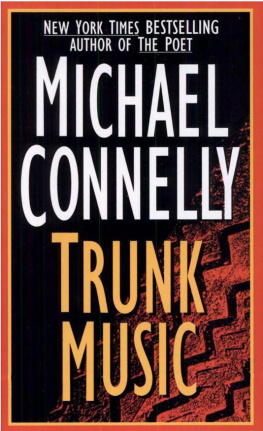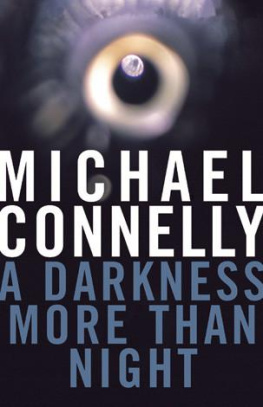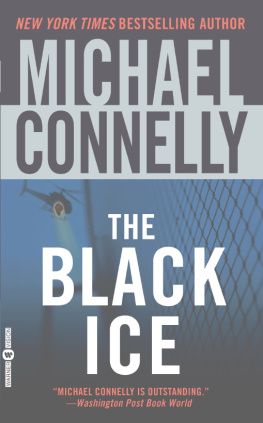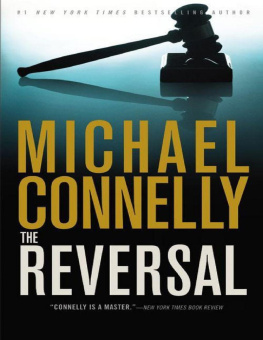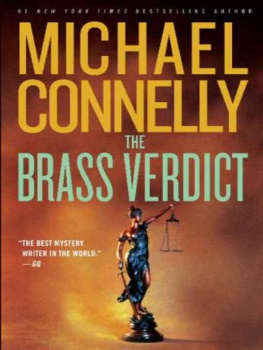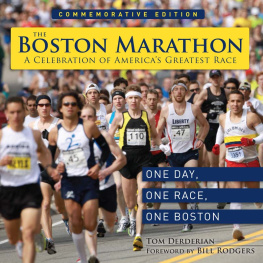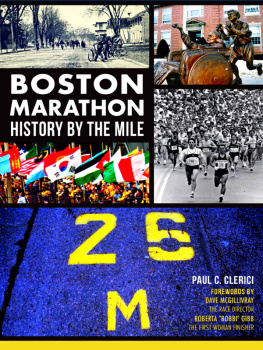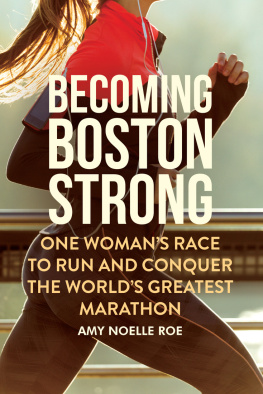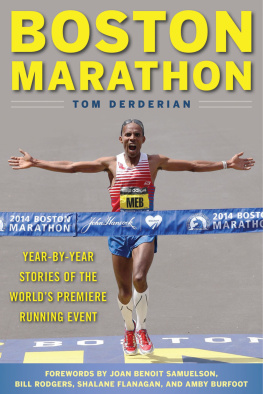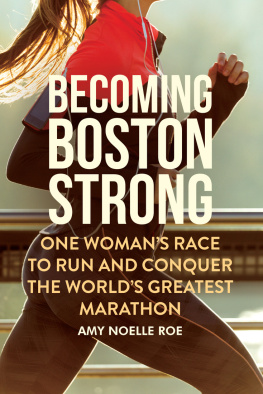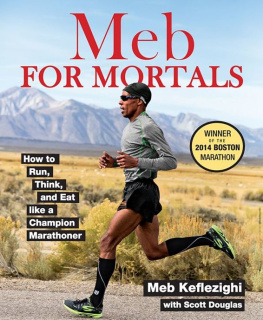M ILE 13
The Boston Marathon Community
Each April, people from every corner of the globe travel thousands of miles to run twenty-six. Nowhere on the face of the Earth do more people from more diverse backgrounds gather for a one-day event. The Boston Marathon is a celebration of tradition, a celebration of health and fitness, a celebration of life. From Hopkinton to Boston, the spectators and runners are provided a stage to act out a play that runs the gamut from Shakespeare to Will Ferrell (runner of the Boston Marathon). Tragedy, triumph, love, frustration, and comedy are all components of this road race.
The Boston Marathon is life itself. For over a hundred years the mecca of all running events is a metaphor for the world around it. As the world has evolved, the Boston Marathon has evolved with it.
The twenty-six miles of roads, sidewalks, and bridges are nothing more than a backdrop for athletic conquests and failures, weddings, inebriated college students, and overpriced vendorsall of whom play an intricate role in molding this race and its legacy.
The Boston Marathons ultimate purpose is as distinct as the people who embrace it. Whether your goal is to run, to barbecue, to say hello to your neighbor, to gather with your family, or to delay studying for college finals, the race is a willing partner for all who come to celebrate.
In this sometimes cynical and unfriendly world, people are more likely to keep their heads down as they hurry by than to offer a hello and a smile to a passing neighbor. This is not the case with the Boston Marathonwhich is one reason the event is so special. If only for one day, the runners give each other reassuring smiles, the fans genuinely wish the competitors well and inspire them to go faster, and farther, and the volunteers freely give immeasurable support to the athletes.
As I was running by a table manned by volunteers, a runner came by and grabbed a desperately needed gob of Vaseline. As he moved on, he yelled, in thanks, I love you! The volunteer shouted back, I love you too!
As I took in this scene, I couldnt help but smile at the sight of people happily giving their time to pass out water and assist the runners with whatever needs they might have. This simple story captures the essence of the Boston Marathon. Its so much more than a laurel wreath and splits and the turn onto Boylston Street. In its purest form, the race has the capacity to break down the hard borders of nations and identities and allow total strangers to realize what they have in common is stronger than what makes them different. From Hopkinton to Boston, each runner is woven together by the thread of collective purpose: They are all there to run the worlds greatest race. In a cold world where the line between what separates seems so defined, so final, its on Patriots Day that the line begins to fade. In the back of the pack, two runners who would have never met otherwise may forge a profound bonddespite the fact that they might be from different countries, belong to different religions, and speak different languagesall because they ran the Boston Marathon together.
When President Obama spoke at the services in Boston after the 2013 terrorist attack, he reflected on the special nature of the Boston Marathon community:
Even when our heart aches, we summon the strength that maybe we didnt even know we had, and we carry on; we finish the race. We finish the race, and we do that because of who we are, and we do that because we know that somewhere around the bend, a stranger has a cup of water. Around the bend, somebodys there to boost our spirits. On that toughest mile, just when we think that weve hit a wall, someone will be there to cheer us on and pick us up if we fall. We know that.
The slow, arduous incline toward Wellesley College continues from the previous mile into Mile 13. The slope is the most difficult ascent on the routeso far. In total, the rise in the route continues for the better part of a mile.
In 1904, it was said that the runners could recognize Wellesley College by the lofty spires. This hilly terrain, which tests the quads and spirits of even top athletes during the race, prompted the most prolific landscape architect of his time, Frederick Law Olmsted Jr. (son of the famed designer of Central Park), to bemoan that the location was problematic because of the complex topography.
Wellesley College was founded in 1870 as a Seven Sisters College, to serve as a female seminary [to] prepare women for great conflicts for vast reforms in social life. In the first years of the institution, 704 students paid $250 to attend the school. Currently, there are 2,350 undergraduates from 62 countries who pay $73,148 a year to live and learn. The school is ranked in the top five nationally for liberal arts schools, according to US News & World Report, boasting such illustrious alumnae as former first lady and secretary of state Hillary Rodham Clinton, journalists Diane Sawyer and Cokie Roberts, former secretary of state Madeleine Albright, and Katharine Lee Bates (class of 1880), author of America the Beautiful.
In the late 1800s, there was a four-story factory situated near the Wellesley College campus. Town benefactor Horatio Hollis Hunnewell did not feel that industry was good for the image of the town, so he simply bought the factory and donated the land to Wellesley College for dormitories. Currently the college is the towns largest employer, with over 1,200 workers. Despite its educational mission and prestigious history, Wellesley College is best known to marathoners as the high-water mark on the course in terms of shrieks and screams.
If there was ever a segment of the first half of the course where a runner needed distraction, this is it. Some runners climb with their heads hung low and spirits starting to melt. Thankfully, the runner discovers this oasis of relief at the gates of Wellesley College.
When the runners arrive, they realize that the legend of Wellesley College is not hyperbole; if anything, its understated. It is here that the past quiet miles turn into a tsunami of well wishes, screams of encouragement, and pleas for a kiss.
At the very first Marathon in 1897, the papers would say of the schools spirit, The pretty college girls at Wellesley, who had assembled along the highway to cheer on the tired runners, had flaunted their dainty kerchiefs and class colors in the faces of the heaving, panting leaders. Ever since that first greeting, the young ladies from the dorms of Pomeroy, Munger, and Shafer have welcomed Boston Marathon runners. In 1899, the papers referred to the students as fair belles or fair maids of Wellesley pretty girls all gowned in fashionable and varicolored gowns. Since that first race in 1897, the women of Wellesley College have hurried through lunch in order to stand on the old stone wall to encourage, inspire, and deafen the passing athletes. Runners need to stay disciplined in this stretch, known, for obvious reasons, as the Scream Tunnel.
From the first runner to the last, the women scream their love. This choir of primal yells can be heard from miles away. They offer good tidings, kisses, and unconditional support. Runners finish this section completely oblivious to form, splits, or terrain. They are so appreciative that one year, a runner kissed as many fans as he could and then reversed his course and returned to the beginning of the Tunnel to do it all over again.
The women of Wellesley epitomize the unique contribution the crowd makes to the race. For more than a centurybeginning with the very first year when they lifted winner John McDermott up on their shouldersthe race has served as a platform for the love affair between fans and runners. The fans are sincere in their adulation, and the runners, sincere in their appreciation. Italian champion Gelindo Bordin, who won Boston in 1990, called the Boston Marathon his favorite race. As a total experience, its unparalleled, Bordin said. The history behind it; the level of competition; the educated fans; the festivities of the day.


